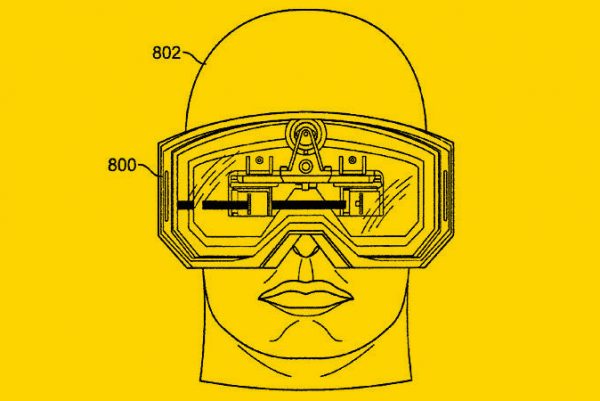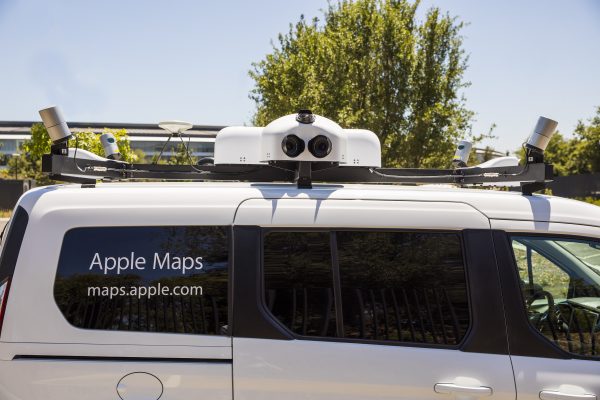Apple Launching its Smart AR Glasses in 2020
The rumor mills have been churning for the past five years about Apple’s plans to build its augmented reality glasses. For the past few years, those speculations have mainly been based on patent information and news reports that Apple was hiring top talent in the AR space.
These speculations are finally becoming a reality with news that Apple’s smart glasses are finally going into production later in the year. Apple analyst Ming-Chi Kuo has stated that the company’s head-mounted displays could go into production as early as the end of this year and the product will likely be launched into the market by 2020. According to the analyst, the production of the AR smart glasses could also move into the second quarter of 2020 if it fails to take off in the second quarter of 2019.

For the past few years, Apple has had a strong AR-focus. The CEO Tim Cook has repeatedly reiterated that AR, which superimposes a computer generated environment onto the user’s real-world view, represents the future indicating a strong interest to pursue innovation in this space.
Kuo has stated that the first-generation of these smart glasses will be marketed as iPhone accessories and will be primarily used as displays when users are off-loading networking, computing as well as GPS locations to an iPhone.
It isn’t clear yet what users will be able to accomplish with the new AR headset. Details are still fuzzy but Kuo says they could work more like the Apple Watch. Users won’t be able to use the AR headsets in a standalone mode without their iPhones as it will be heavily reliant on the phones for functionality.
The smart glasses will function as deported displays to provide users with the computer-generated information in front of their eyes. Because of the heavy iPhone-dependency, the iPhones will do the heavy lifting as far as computational power, location services and connectivity are concerned.
The Kuo report doesn’t specify what is under the hood in the headset. There are all sorts of elements that Apple could embed onto the device such as displays and sensors that will make the AR headset “aware” of the surroundings where it will intelligently superimpose the digital images.
Apple has in the past done AR test runs on iOS with its ARKit framework. During these experiments, developers have been able to build apps capable of integrating digital elements onto the real world when viewed via users’ phone cameras.
There are also apps that are built with AR features but many of them have so far felt a little gimmicky without any real value for the user experience. So far, there aren’t enough AR-native apps that users can try out with an AR headset.
There are however lots of potential use-cases that can be leveraged for an AR-headset such as mapping. Google recently launched an augmented reality mode for the Google Maps that allows users to hold their phones in front of their faces to see location arrows pointing to where they are supposed to go.
Apple on the other hand has been using its own data sets to rebuild its Apple Maps. Not only is Apple providing its users with Map functionality, it is also leveraging on vast real world data using LiDAR sensors and a set of eight cameras that are installed on a car roof. The Apple Maps is likely to be critical for its upcoming AR headset.

There are still doubts on how Apple’s AR technology will interface with the iPhone. Several options have been floated and each has its limitation. A Bluetooth connection for example will face the challenge of limited data throughput and will likely pose a serious issue when users are trying to show real-time videos. Earlier reports had suggested that Apple’s glasses might use “WiGig” standard which would enable faster data connections but this will in turn require that Apple work only with the next-generation versions of iPhones or come with an adapter that would allow an interfacing. A 5G phone has also been rumored to be in the offing and this, interfaced with 5G smart glasses, will make for a very powerful augmented reality setup that will assure users of quality experiences.
Kuo is a trusted source within the Apple community and has had a great track record when it comes to predictions of Apple’s upcoming developments so this news is in all probability credible and the prediction is likely to stand to scrutiny.
With the Apple sales declining, Apple AR glasses tied to its iPhones are likely to be a crucial differentiator from its fierce competitors.
https://virtualrealitytimes.com/2019/03/08/apple-launching-its-smart-ar-glasses-in-2020/https://virtualrealitytimes.com/wp-content/uploads/2019/03/Apple-Augmented-Reality-Headsets-Going-into-Production-in-2020-600x369.pnghttps://virtualrealitytimes.com/wp-content/uploads/2019/03/Apple-Augmented-Reality-Headsets-Going-into-Production-in-2020-150x90.pngAR HeadsetsHardwareThe rumor mills have been churning for the past five years about Apple’s plans to build its augmented reality glasses. For the past few years, those speculations have mainly been based on patent information and news reports that Apple was hiring top talent in the AR space. These speculations are...Sam OchanjiSam Ochanji[email protected]EditorVirtual Reality Times - Metaverse & VR
